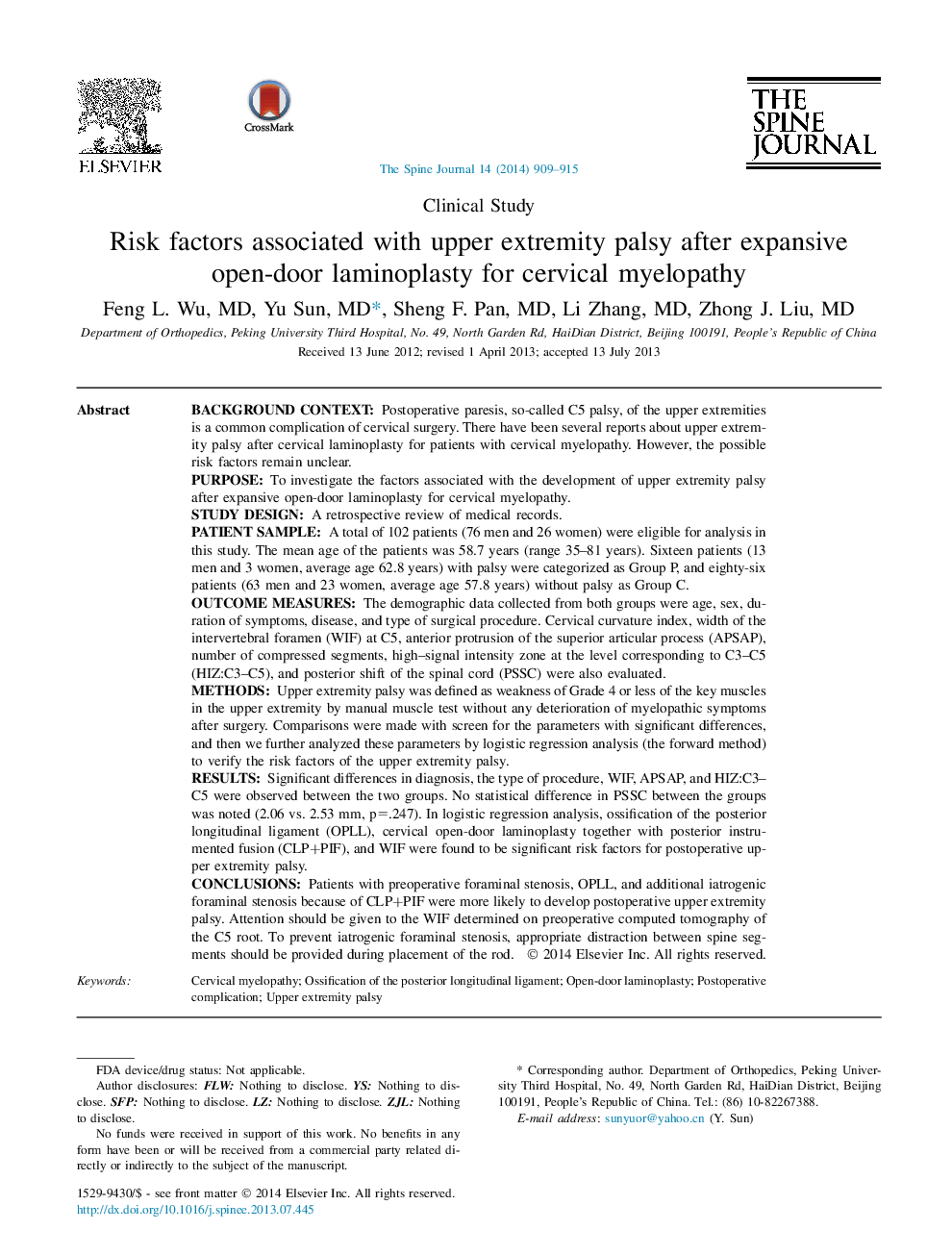| کد مقاله | کد نشریه | سال انتشار | مقاله انگلیسی | نسخه تمام متن |
|---|---|---|---|---|
| 4097765 | 1268598 | 2014 | 7 صفحه PDF | دانلود رایگان |
Background contextPostoperative paresis, so-called C5 palsy, of the upper extremities is a common complication of cervical surgery. There have been several reports about upper extremity palsy after cervical laminoplasty for patients with cervical myelopathy. However, the possible risk factors remain unclear.PurposeTo investigate the factors associated with the development of upper extremity palsy after expansive open-door laminoplasty for cervical myelopathy.Study designA retrospective review of medical records.Patient sampleA total of 102 patients (76 men and 26 women) were eligible for analysis in this study. The mean age of the patients was 58.7 years (range 35–81 years). Sixteen patients (13 men and 3 women, average age 62.8 years) with palsy were categorized as Group P, and eighty-six patients (63 men and 23 women, average age 57.8 years) without palsy as Group C.Outcome measuresThe demographic data collected from both groups were age, sex, duration of symptoms, disease, and type of surgical procedure. Cervical curvature index, width of the intervertebral foramen (WIF) at C5, anterior protrusion of the superior articular process (APSAP), number of compressed segments, high–signal intensity zone at the level corresponding to C3–C5 (HIZ:C3–C5), and posterior shift of the spinal cord (PSSC) were also evaluated.MethodsUpper extremity palsy was defined as weakness of Grade 4 or less of the key muscles in the upper extremity by manual muscle test without any deterioration of myelopathic symptoms after surgery. Comparisons were made with screen for the parameters with significant differences, and then we further analyzed these parameters by logistic regression analysis (the forward method) to verify the risk factors of the upper extremity palsy.ResultsSignificant differences in diagnosis, the type of procedure, WIF, APSAP, and HIZ:C3–C5 were observed between the two groups. No statistical difference in PSSC between the groups was noted (2.06 vs. 2.53 mm, p=.247). In logistic regression analysis, ossification of the posterior longitudinal ligament (OPLL), cervical open-door laminoplasty together with posterior instrumented fusion (CLP+PIF), and WIF were found to be significant risk factors for postoperative upper extremity palsy.ConclusionsPatients with preoperative foraminal stenosis, OPLL, and additional iatrogenic foraminal stenosis because of CLP+PIF were more likely to develop postoperative upper extremity palsy. Attention should be given to the WIF determined on preoperative computed tomography of the C5 root. To prevent iatrogenic foraminal stenosis, appropriate distraction between spine segments should be provided during placement of the rod.
Journal: The Spine Journal - Volume 14, Issue 6, 1 June 2014, Pages 909–915
